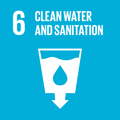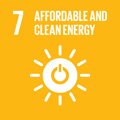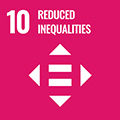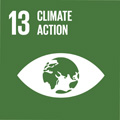- Docente: Serena Ghiselli
- Credits: 5
- Language: English
- Teaching Mode: Traditional lectures
- Campus: Forli
- Corso: First cycle degree programme (L) in International Studies (cod. 5949)
Learning outcomes
At the end of the course the student can understand the main ideas of complex written and oral texts in the academic field of social and political sciences. Can interact with a degree of fluency and spontaneity and can express and negotiate viewpoints . Can produce clear, detailed texts on a wide range of subjects and explain a viewpoint on a topical issue giving the advantages and disadvantages of various options.
Course contents
The course is aimed at developing academic writing and public speaking skills. Writing and oral communication strategies are discussed using authentic materials on three international relations topics: migration, international history and the environmental issue in international cooperation and public opinion.
For academic writing, lessons deal with the following topics:
- Essay writing: the three parts of an essay (introduction, body and conclusion); writing paragraphs; cohesion and coherence; writing concisely; summarising and paraphrasing; describing graphs; reading comprehension exercises on academic texts
- Documentation and reference style: how to look for reliable sources to write an academic essay; how to add references in an essay and in an academic dissertation; the structure of an academic paper and strategies to extract and report contents in your own essay/dissertation
- Using authentic texts to extract terminology and phraseology: every attending student collects a source to be used to extract keywords and n-grams
- Grammar and language functions focus: as a language focus activity, lessons include grammar and phraseology topics, which the students do practical exercises on.
The laboratory on public speaking includes the following activities:
- Presentations, discussions, and debates with the purpose of improving functional language used in speaking such as: signalling a start, introducing the subject, presenting the purpose, asking rhetorical questions, providing background information, narrowing the topic, indicating a change of topic, emphasizing a point, summarizing a main idea, moving on/transitioning, linking ideas (cause and effect, contrast, additions, etc.) describing visual aids, signalling a close, dealing with questions
- Voice/delivery will also be worked on, which means improving the pronunciation of individual sounds, intonation, using stress to highlight key words and having right voice speed.
Readings/Bibliography
A dossier containing texts to be analysed during the course is made available online (Virtuale) when the course begins.
The following references are not a list of compulsory readings. They are texts regarding the topics and exercises that are included in the course.
Bianchi, Francesca, and Roberto Pazzaglia. 2007. ‘Student Writing of Research Articles in a Foreign Language: Metacognition and Corpora’. In Language and Computers: Studies in Practical Linguistics, 259–88. Amsterdam/New York: Rodopi.
Geyte, Els Van. 2013. Writing: Learn to Write Better Academic Essays. Londra: Collins.
Manninen, Satu, Ellen Turner, and Cecilia Wadsö-Lecaros. 2020. Writing in English at University: A Guide for Second Language Writers. Vol. 120. Lund Studies in English. Lund: Centre for Languages and Literature, Lund University. https://www.coursera.org/learn/writing-english-university .
Pellizzari, Nicola. 2023. Critical Reading and Writing in Academic Contexts - a Resource Book for Students. Limena (PD): libreriauniversitaria.it. https://edizioni.libreriauniversitaria.it/libro/critical-reading-and-writing-in-academic-contexts/.
Wallwork, Adrian. 2013a. English for Academic Research: Grammar Exercises. Boston, MA: Springer US. https://doi.org/10.1007/978-1-4614-4289-9 .
———. 2013b. English for Academic Research: Vocabulary Exercises. Boston, MA: Springer US. https://doi.org/10.1007/978-1-4614-4268-4 .
———. 2013c. English for Academic Research: Writing Exercises. Boston, MA: Springer US. https://doi.org/10.1007/978-1-4614-4298-1 .
———. 2013d. English for Research: Grammar, Usage and Style. Boston, MA: Springer US. https://doi.org/10.1007/978-1-4614-1593-0 .
Zemach, Dorothy E., and Lisa A. Rumisek. 2005. Academic Writing from Paragraph to Essay. [New ed.]. Oxford: Macmillan.
The following references are the books to study for the oral exam for non-attending students. Every student has to choose one book out of these three options:
Diener, Alexander C., Joshua Hagen. 2012. Borders: A Very Short Introduction. New Edition, Second Edition, New Edition, Second Edition. Very Short Introductions. Oxford, New York: Oxford University Press.
Koser, Khalid. 2016. International Migration: A Very Short Introduction. Second Edition, Second Edition. Very Short Introductions. Oxford, New York: Oxford University Press.
Maslin, Mark. 2021. Climate Change: A Very Short Introduction. Fourth Edition, Fourth Edition. Very Short Introductions. Oxford, New York: Oxford University Press.
Teaching methods
The academic writing classes include theoretical explanations and examples, followed by group work to be carried out during the lesson and individual work as homework, compulsory to take the exam as an attending student.
The language laboratory is aimed at improving fluency and accuracy in speaking skills in order to allow students to reach a good command of linguistic and communicative competence. It is conducted in relatively small groups.
Assessment methods
Attendance is not compulsory, but the exam is different for attending and non-attending students. The final mark is out of 30 and corresponds to the average between the academic writing and the public speaking exams. The evaluation ranges are the following: excellent with honours/excellent (30L/30), above-the-average (29-28), very good/good (27-26), adequate (25-24), sufficiently adequate (23-21), barely sufficient (20-18), fail (≤ 17).
Academic writing exam for attending students
For the academic writing course, an attending student is defined as someone who (1) has attended at least 70% of classes, (2) has done all the homework activities available on Virtuale (reading comprehension, grammar, vocabulary and source search), (3) has handed in the two continuous assessment writing exercises and (4) has peer-reviewed another student’s work. Homework activities and peer review are not given a mark, but their completion is compulsory to be considered an attending student.
The two continuous assessment exercises are two short pieces of writing: a compare and contrast exercise based on two sources (250-300 words) and the description and comment on a graph (250-300 words). The final exam consists in writing an essay (500-600 words) on one of the topics discussed during the course based on three sources given by the teacher.
The academic writing mark corresponds to the weighted average of the continuous assessment and the exam distributed as follows: 10% for every continuous assessment writing exercise and 80% for the exam essay.
Academic writing exam for non-attending students
The written exam consists of three parts: a text with gaps to fill, questions on topics related to academic writing and the description of a graph (100-150 words). The mark corresponds to the weighted average of the three parts: 25% for gap filling, 25% for questions on academic writing and 50% for the description of a graph.
Public speaking exam for attending students
For public speaking, an attending student is defined as someone who (1) has attended at least 80% of lab classes and (2) is also an attending student of the academic writing course (see above). Students are evaluated based on their participation (level of engagement and listening skills) and on an oral presentation they have to prepare on a topic of their choice.
Public speaking exam for non-attending students
For the public speaking exam, non-attending students have to prepare a 10-minute presentation on a topic related to the book chosen (see Readings/Bibliography section) and send Dr. Ghiselli slides (including references) a week before the exam date. After the presentation, there are 10 minutes of discussion about the book. The mark corresponds to the average between the prepared presentation and the discussion about the book.
Assessment criteria
The assessment criteria for the writing exercises are:
- Response to the question: use of writing prompt(s)
- Content: communicative achievement
- Writing skills: organization and development of ideas
- Language: vocabulary, grammar, language functions
The assessment criteria for the oral presentation are:
- Delivery: pronunciation, voice and body language, use of visual aids
- Content: communicative achievement
- Structure: organization and development of ideas, both during the prepared presentation and the follow-up questions
- Language: vocabulary, grammar, language functions
Teaching tools
Virtuale course page, audio/video materials
Office hours
See the website of Serena Ghiselli
SDGs




This teaching activity contributes to the achievement of the Sustainable Development Goals of the UN 2030 Agenda.
